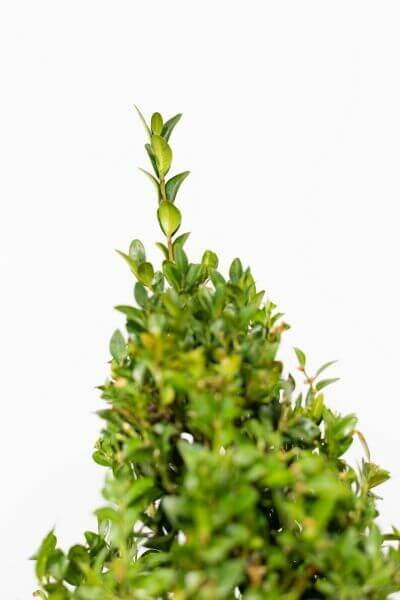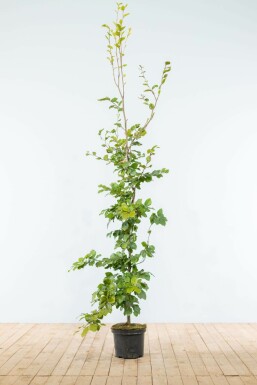Hedge Plants For Formal Gardens
Improve your garden's attraction with rich hedge varieties such as Yew (Taxus), Thuja, Laurel, Photinia, and Bamboo, commemorated for their structural integrity and ecological benefits.
Yew and Thuja supply evergreen coverage and winter strength, while Laurel offers quick growth and broad, fragrant leaves.
Photinia includes seasonal charm with its vibrant red foliage, and Bamboo provides a low-maintenance, serene ambiance.
These hedges enhance air quality, reduce noise, and produce tranquil, personal spaces.
Appropriate planting, spacing, and upkeep ensure energetic development and ecological harmony.
Check out how these lavish varieties can elevate your garden's charm and wellness.
Key Takeaways
Change Your Garden With Lush Hedge Ranges
- Select Yew for its dense, evergreen development and exceptional durability.
- Opt for Laurel for its fast growth and broad leaves, making sure fast privacy.
- Select Photinia for its lively seasonal foliage, which turns a striking dark red.
- Utilize Bamboo for a low-maintenance, winter-hardy hedge with aesthetic appeal.
- Space plants 2-3 per meter and prune frequently for optimum growth and health.
Popular Hedge Plants
When transforming a garden with lush hedge varieties, it's important to consider popular hedge plants such as Yew, Thuja, Laurel, and Photinia due to their special attributes and benefits.
Yew (Taxus) is extremely respected for its durability and thick, green growth, making it a prime choice for enduring landscapes.
Thuja is noted for its evergreen foliage and robust winter season resilience.
Photinia includes seasonal vibrancy with red leaves that darken over time, creating vibrant visual appeal.
Laurel uses rapid growth and fragrant, broad leaves, ideal for quick personal privacy.
In Addition, Bamboo is an exceptional option for atmosphere, using a low-maintenance, winter-hardy choice that improves the garden's aesthetic with its elegant, swaying walking canes.
These choices accommodate a variety of horticultural needs and choices.
Benefits of Garden Hedges
Garden hedges offer a multitude of advantages, making them an important addition to any landscape. These natural barriers are affordable to implement and supply considerable wind security, enhancing air blood circulation and contributing to noise decrease. The dense foliage of hedges like Thuja and Beech makes sure personal privacy by obstructing presence, producing a serene and remote environment.
Hedges also play a crucial function in microclimate regulation, offering a steady environment that promotes plant development and lessens temperature changes. Their intricate leaf structures filter toxins, improving air quality and adding to a healthier garden environment.
Moreover, hedges master noise reduction, soaking up and deflecting sound waves to lower ambient sound levels. This double functionality of supplying both visual and acoustic personal privacy boosts the general harmony and aesthetic appeal of any garden.
Planting and Maintenance Tips
For an effective hedge, careful preparation of the planting area is important. Make sure the soil has appropriate pH and drainage to support strong root advancement.
Space the plants properly for the selected species. Water the hedge regularly throughout its initial development phase, changing as needed with seasonal modifications.
Carry out a organized bug control and disease prevention method, utilizing chemical or organic treatments when essential. Frequently inspect for aphids, termites, and fungal infections.
Apply mulch to retain moisture and reduce weeds. Seasonal pruning promotes dense growth and air circulation, vital for plant health.
Following these standards will assist you cultivate a lively, well-maintained hedge that improves the beauty of your garden.
Spacing and Trimming Standards
Spacing and Cutting Standards
Correct spacing and cutting are vital for cultivating healthy, aesthetically appealing hedges. Appropriate spacing makes sure each plant gets sufficient nutrients, light, and air flow.
Follow these standards for optimum hedge upkeep:
- Spacing: Position hedge plants 2-3 plants per meter to motivate robust growth.
- Pruning Methods: Regular pruning is important for maintaining desired hedge height and shape. Trim brand-new growth in summer and cut back older wood throughout winter season.
- Seasonal Care: Change cutting techniques and schedules according to seasonal requirements to ensure plant health.
- Hedge Height: Regularly display and cut to preserve the desired hedge height and achieve consistent looks.
Sticking to these steps will ensure your hedge grows, boosting both the appeal and functionality of your garden.
Choosing the Right Hedge
Picking the Right Hedge
Selecting the proper hedge includes evaluating aspects such as fully grown height, foliage density, and environmental durability. Successful hedge plant selection needs understanding each species' development characteristics and site-specific flexibility.
For example, Yew (Taxus) uses outstanding longevity and thick growth, while Thuja is significant for its winter strength. Furthermore, considering upkeep requirements is crucial; fast-growing types like Laurel or Privet demand routine trimming, whereas low-maintenance choices like Bamboo or Ivy might be more effective for those seeking very little upkeep.
Ecological factors such as soil type, light schedule, and moisture conditions must also direct the choice process. This cautious technique guarantees the picked hedges will thrive, offering both visual and functional benefits to the garden landscape.
Delivery and Planting Advice
To ensure your hedge plants prosper, they need to be delivered by specialized couriers and planted without delay upon arrival.
Follow these essential steps for effective planting:
- Soil Preparation: Improve the soil with raw material to improve drainage and nutrient material.
- Planting Depth: Develop a trench two times the width and equal to the depth of the root ball.
- Watering Techniques: Water thoroughly after planting, keeping the soil regularly wet however not saturated.
- Mulching: Apply a layer of mulch to retain moisture and suppress weeds.
Client Assistance and Service
Offered the essential role of timely support in horticultural pursuits, our client assistance group is readily available 6 days a week through telephone, e-mail, and social networks to use expert guidance and quickly deal with any concerns. Their commitment to quick reaction times makes sure customer satisfaction by solving queries associated with plant health, optimum planting methods, and maintenance schedules.

-----------------
Within 24 hours
This thorough support group, strengthened by an excellent 9.3/ 10 consumer ranking, highlights our commitment to boosting the gardening experience for every customer.
Often Asked Questions
How Long Does It Consider Hedge Plants to Develop?
Hedge plants normally require one to 3 years to become totally established, with the specific duration differing by species and growing conditions.
Reliable care during this important period is necessary for robust growth. Constant watering, vigilant weed control, and suitable fertilizer application are essential in promoting strong root development.
For example, fast-growing types like Laurel may establish more rapidly, while slower-growing varieties such as Yew might take longer. Thorough maintenance accelerates the facility procedure, leading to dense and healthy hedges.
What Are the Finest Hedge Plants for Privacy?
The question of the finest hedge plants for personal privacy includes evaluating evergreen and deciduous choices.
Evergreen hedges like Thuja, Laurel, and Cypress supply year-round coverage, ensuring continuous privacy.
On the other hand, deciduous hedges such as Beech use seasonal personal privacy, shedding leaves in cooler months.
Key maintenance suggestions for privacy hedges include regular trimming, fertilizing in spring, and appropriate spacing-- usually 2 to 3 plants per meter.
Furthermore, constant watering and persistent weed elimination are important for promoting healthy, thick development.
Can Hedge Plants Draw In Wildlife to My Garden?
Yes, hedge plants can draw in wildlife to your garden by offering essential benefits like shelter, food, and nesting sites, thereby enhancing regional biodiversity. For example, yew, holly, and laurel are exceptional for attracting birds, while ivy supports a variety of bugs.
Nevertheless, it is very important to keep in mind that there are some disadvantages, such as increased maintenance to handle bugs and routine upkeep. Thoroughly picking and preserving hedge varieties can assist stabilize these benefits and drawbacks, eventually promoting a dynamic and sustainable environment in your garden.
Are There Any Blooming Hedge Plants Available?
Yes, there are flowering hedge plants offered that can enhance the appeal of your garden.
For example, Elaeagnus, likewise known as Olive Willow, produces aromatic white flowers in the fall, adding a touch of sophistication.
Photinia, another popular choice, showcases lively red leaves that develop into an abundant green, producing a vibrant visual impact throughout the seasons.
To make sure these plants flourish, it's necessary to practice appropriate pruning strategies and seasonal maintenance, such as cutting brand-new growth in the summer season and cutting back in the winter.
These procedures will help preserve the health and visual appeal of your flowering hedges.
How Do I Prevent Insects in My Hedge Plants?
To avoid pests in hedge plants, check here utilize natural bug control methods and preserve correct hedge care. Introduce useful pests like ladybugs, which prey on hazardous bugs, to develop a balanced ecosystem.
Routinely examine your hedges for indications of problem and without delay get rid of any afflicted parts to prevent the spread. Ensure the health of your hedges by applying balanced fertilizers and offering sufficient water.
Use mulching to keep soil wetness and appropriate spacing to lower plant tension and promote robust development. These practices jointly assist in decreasing bug concerns and keeping a healthy hedge.
Conclusion
In essence, picking the ideal hedge ranges such as Yew, Thuja, and Laurel can change any garden into a relaxing haven. These plants offer year-round greenery, enhance visual appeal, and deal practical benefits like noise decrease and wind defense.
Appropriate planting methods, accurate spacing, consistent watering, and seasonal cutting are crucial for ideal growth.
Reputable delivery services and expert consumer assistance ensure a smooth experience from purchase to planting, making it easier than ever to raise your outside space.
Garden hedges offer a multitude of advantages, making them a valuable addition to any landscape. These natural barriers are cost-effective to carry out and offer significant wind defense, improving air circulation and contributing to sound reduction. The thick foliage of hedges like Thuja and Beech ensures personal privacy by obstructing presence, creating a tranquil and secluded environment.

Pruning Methods: Routine pruning is vital for preserving preferred hedge height and shape. Trim new development in summer season and cut back older wood throughout winter.